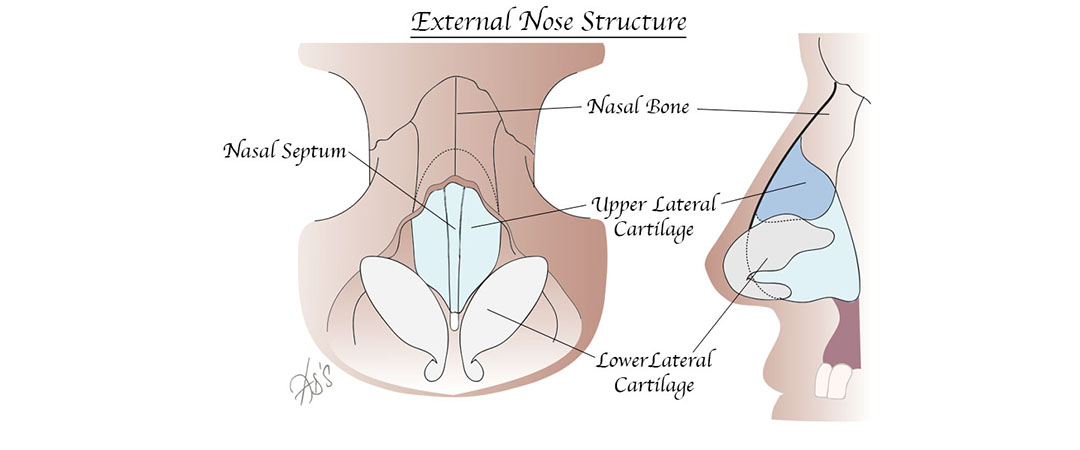

Rhinoplasty Surgery can change the shape of the whole or part of the nose to make it more aesthetically pleasing, as well as improve the nasal function. When rhinoplasty is combined with work on the septum (midline partition of the nose), it is called a Septorhinoplasty, which forms a part of the Rhinoplasty procedure.
Rhinoplasty is by far the most complex of all the facial plastic surgical operations. The skin, strength, shape, and symmetry of the nasal bones and cartilages, healing power of your body and, of course, the skill of the surgeon, all influence the overall outcome. Minor imperfections are common after rhinoplasty hence, perfection is not the goal. Factors such as thick oily skin, previous trauma, smoking, nasal allergies, use of recreational drugs, facial asymmetry, and unrealistic expectations all have a negative effect on the outcome.
A full assessment of the nose and facial features is carried out with the aid of photographs during the consultation. The surgery is usually performed whilst you are asleep. Cuts are made inside and occasionally outside the nose and the skin is lifted off the bone and cartilage underneath. A hairline fracture may be made in the nasal bones to allow the change in the shape of the nose. Small pieces of bone and cartilage may be removed from or even added to the nose to smooth out any bumps or dips. At the end of the procedure all cuts are stitched with soluble sutures. In some cases, extra cartilage is required to obtain the desired shape of the nose. This cartilage is taken from the ear, ribs or from other external sources. An external splint applied during surgery is usually removed 5-7 days after the procedure.
Complications include but not limited to:-
About 5-10% of patients need additional operations in the future to further adjust the shape of the nose. This may be done as a revision surgery or planned before the first operation.
Please click HERE for more information on the ENTUK website
PRACTICE MANAGER: Chelsea Fulton 07534 771264 MEDICAL SECRETARY: Karen Harris 07453 881588
CORRESPONDENCE ADDRESS: Enso House Crayfields Business Park, 3 New Mill Road, Orpington BR5 3TW | Tel: 01689 490119 | Fax: 01689 873221